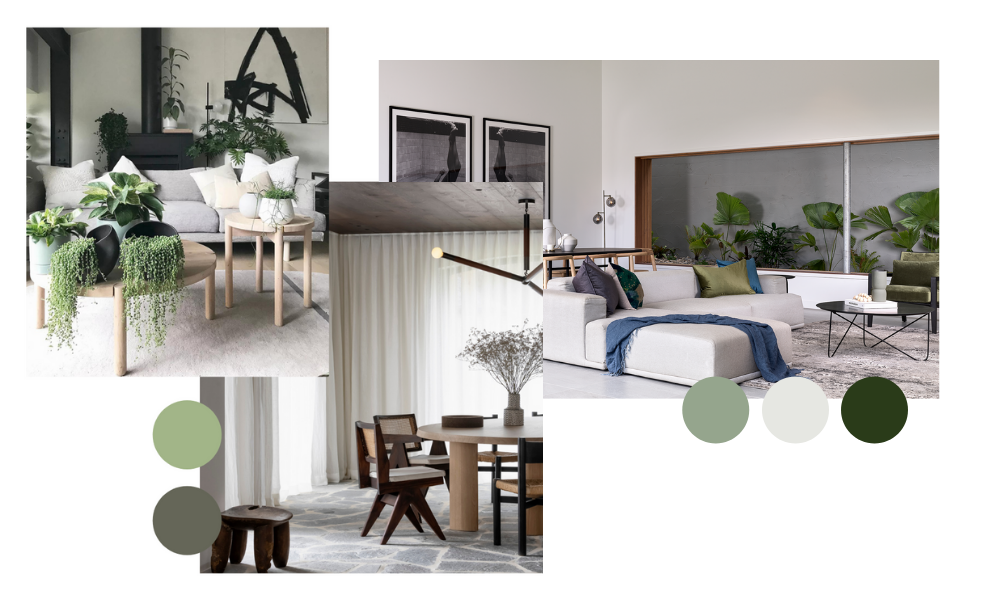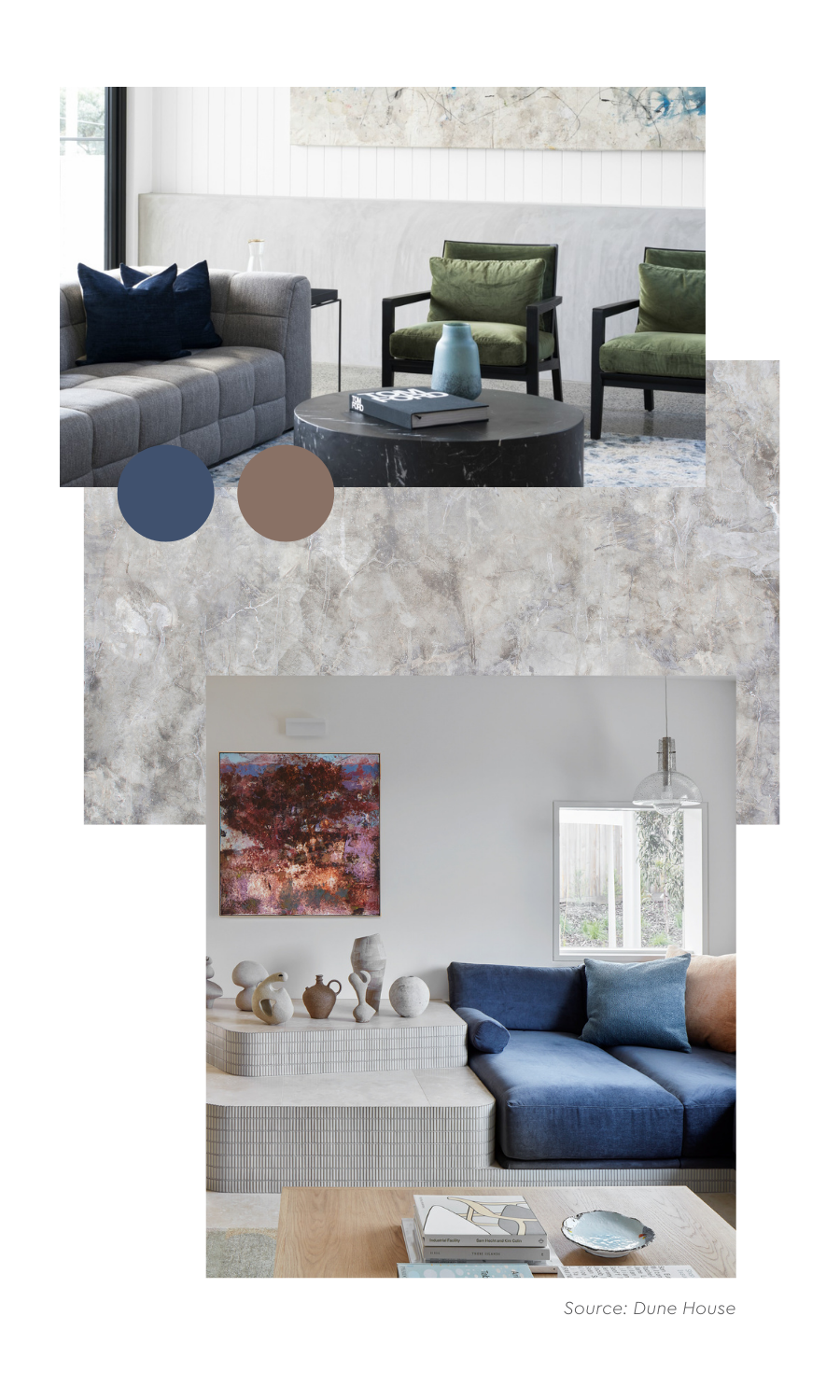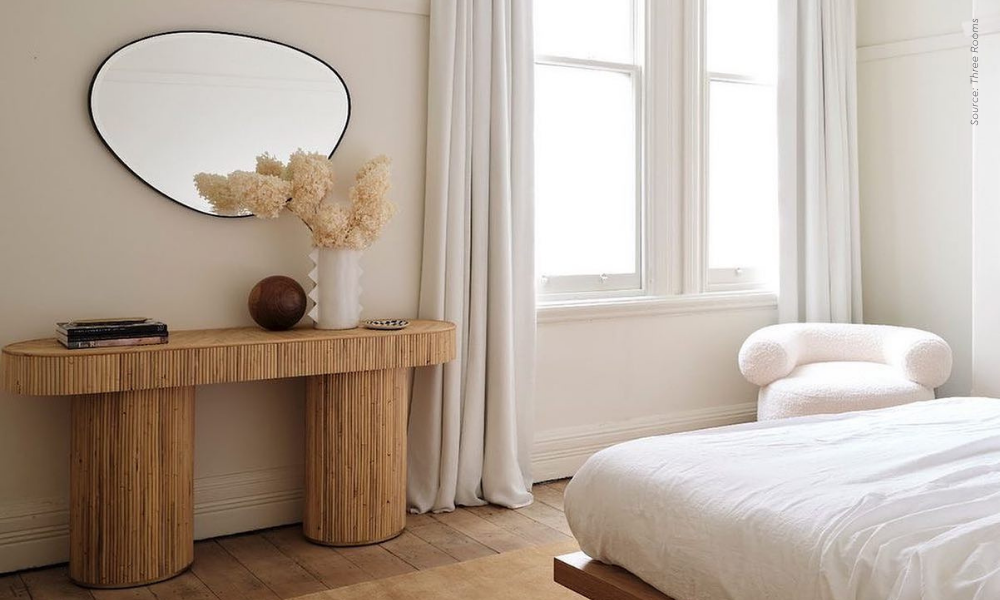Following a period where many have spent more time at home than ever before, we’re seeing a renewed focused on the influence our homes and interior spaces have on our mood, health and wellbeing.

With the new year now in full swing, we asked our Creative Director, Samuel Clarke, for the top 5 trends we can expect to see this year in the world of interiors and styling. Ranging from sustainable design and the handmade through to geometric and internationally inspired décor, there’s something for everyone to spruce up their spaces in 2022.
One: Sustainable and Biophilic Design
Sustainable and Biophilic design are all about our focus on both protecting, and regaining our connection to, the natural world. Alongside plenty of natural indoor plants and floral, expect to see continued popularity of earthy tones and textures, and lots of natural tactile materials like wood, plaster, clay, raw metals, and leather.
Colour trends for interiors in 2022 also reflect our need to be close to nature, ranging from leafy greens to ocre and clay brown. Multi-tonal browns are layered with lighter taupes, creams and whites to create a soft and calming contrast. Darker timber tones like walnut are also set to make a comeback in interiors this year to bring an additional sense of rich earthiness to the space.

Two: Vintage, Artisan, and Handmade Pieces
Closely tied to sustainable and biophilic design principles, this trend is centred around increased awareness of the environmental impact of mass production and buying new, and as a result we’re seeing more mindfulness around the kinds of materials we are introducing into homes.
Using second-hand vintage pieces and opting for more recycled and repurposed materials is becoming an area of focus for designers and consumers alike, and the recent 'shop local' movement has also seen us opting for products made my local artisans that support local economies and reduce our environmental impact.
These recycled, upcycled or artisanal products make for more unique and inspiring interiors that are a true reflection of their inhabitants.
Three: Rounded edges and wavy geometry
Responding to a need for a sense of calm and tranquillity, soft, rounded shapes and wavy edges are appearing in furniture and homewares everywhere. This soft geometry adds a sense of light-heartedness to a space and contrasts the typical hard geometry of interior architecture.
These interesting and organic shapes add interest and personality, and touches of unexpected whimsy that boost inspiration and optimism. This inspired playfulness can be seen in the resurgence of postmodern design influences in furniture design.

Four: European Elegance
Following years of travel restrictions, the European elegance trend is about ‘holiday at home’ style.
We’re seeing fun and interesting interpretations of traditional Classism style as designers find new ways of using classic pieces in new contexts. You’ll spot it in the rise in décor inspired by motifs of classic Europe. Think carved stone busts, ornate vintage artwork and sculptures, distressed patinas and character-driven vintage pieces mixed in with the new.
Five: Checks and Stripes
In contrast to the popularity of rounded edges and wavy geometry, the re-emergence of traditional checks and stripes in interior furniture and décor reflects our collective need for more order and predictability in our lives.
Repetitive lines and stripes can be found texturally in furniture in panelled timber, corrugated glass and tiles, as they provide a sense of calm symmetry.
.3ecc05f62d4d3c60a8f9701051427d61.png)
New takes on traditional check patterns are becoming popular in artwork, cushions, throws and other soft furnishings as an easy way to introduce a sense of order and symmetry, and a fun way to contrast the relaxed softness of curved edges and wavy geometry.